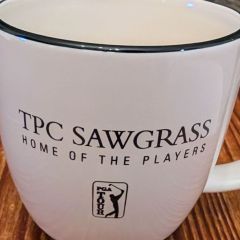-
Posts
816 -
Joined
-
Last visited
-
Days Won
2
Big Lex last won the day on July 27 2022
Big Lex had the most liked content!
About Big Lex

- Birthday November 9
Personal Information
-
Member Title
Golfer
-
Your Location
Central NJ
Your Golf Game
- Index: 10
- Plays: Righty
Recent Profile Visitors
5,639 profile views
Big Lex's Achievements
-
How does GEARS set the zero point for things like of limbs, the clubface, etc.? I think the discrepancy between the graph you posted and the statements Mike makes in the video must be related in some way to the details of measurement....how and when and maybe even what they are measuring. If, as Mike says in this video, the humerus intermally rotates a few degrees but the forearm externally rotates 20 degrees at the same time, maybe the chart Joe posted uses a measurement that is somehow capturing - intentionally or not - the forearm rotation and attributing that to the arm/shoulder.
-
Just so I understand his nomenclature, the graph, etc.... When the line is "downhill," there is external rotation of the arm at the shoulder joint. When it's uphill, internal rotation. So from the start of the backswing to about "mid" backswing (left arm horizontal?), the arm rotates externally at the shoulder. From there to the top of the backswing, it rotates internally. From the top through the early downswing (ED and EDA?), there is a small amount of external rotation. From there on in, it's alot of internal rotation. Correct? Regarding measurement, do you know how Joseph Mayo is measuring shoulder rotation?
-

Thoughts on "Immediate Improvement"
Big Lex replied to iacas's topic in Instruction and Playing Tips
There are so many pitfalls in semantics, and in general in trying to argue things on Twitter or on online forums. So in deference to Roman, I get the general idea, the "spirit" of what he is saying, maybe, in that the teacher should be focused on making a student improve, no matter what it takes, and shouldn't be satisfied (or expect the student be satisfied) with anything less than "improvement." But there are reasonable limits to the amount and the pace of improvement. But how to you define improvement? Does that mean hitting it better at the end of the lesson than you did at the beginning? I think this is a pretty easy task for most teachers, if that is their goal. But what does that get us? Not much, I don't think. Making real improvement, the durable kind that lasts, requires you learning something until it is instinctual; for a complex motion, I define instinctual as something you've learned to the level at which you can execute it reasonably correctly most or all of the time, without having to think about it. And to make it even harder, quite often, building something like this also means you must extinguish something which is already instinctual but which isn't correct. Expecting all that to happen in a straight linear fashion, without any backward steps at any point along the way, is not realistic at all.- 18 replies
-
- improvement
-
(and 2 more)
Tagged with:
-
Thanks everyone for excellent comments! The ARM doesn't, but the forearm DOES. They don't mention it often, but the wrist (forearm) does have a movement in the shallowing. It's very minimal - I can't remember how many degrees they said it is - but as the arm lowers, the elbow extends, and the forearm supinates (well....not sure the correct terminology, whether the wrist or hand "supinates" and maybe the forearm "externally rotates," but whatever terminology, there is a little wrist/forearm movement in the shallowing). A LITTLE. I had the same experience, and the longer the club, the weirder it feels, to me. To me, it feels like I put the club head somewhere where it ain't never going to get back to the ball, some place where I can't swing it from. But as Erik said, oh boy when you DO manage to do this, you find it's actually easier to hit the ball and the club head is moving faster. Right now, I can't do it reliably at full speed in a swing. I can do it at probably 60% I would guess. I plan to practice this alot and try to incorporate it into my swing. Agree. I wish I could hack the video and correct it. It's like seeing a crooked painting on the wall in someone's house and just itching to fix it. 🙂
-
I finally figured out what the Jim Venetos videos remind me of. Those late night infomercial guys of the 1990s. There were alot of them, all making these cheesy, too-good-to-be-true pitches for ways to make money easily. Those on the more legit end were real estate flipping schemes, and the more funny and questionable ones were guys like Don Lapre, who told you to place "tiny classified ads" to generate "income," and another guy who would put on these silly suits and clothes and try to get you to buy his book which listed thousands of government programs which sent you "FREE MONEY."
-
They do too much to shallow the club, but also do the wrong things to shallow the club. It's a great video for demonstrating the pitfalls of interpreting the swing in 2D, for showing how technology can help us understand the actual movement of isolated parts of the body, and for showing how sometimes we do the wrong things in the swing not because we aren't capable of doing the right things, but because we adopt incorrect concepts about the swing.
-
Major clean up, multi-modal. I've been in my current house for just under 3 years. We just finished having almost the whole inside painted. I had old cabinets from a 2021 kitchen remodel that I put together in the basement and fashioned a top for them, creating a work bench type area. Other cabinets from the remodel were attached to various basement walls. Stuff we had been storing in the upstairs were moved down into this new space/workshop. It's endless....we keep discovering assorted weird, quirky things that previous owners did to this house, and one by one we are undoing them, upgrading, modernizing.
-
One more thing I didn't understand was his assertion at the very beginning that the club is "as shallow at the top as at any point in the swing." I'm not sure I follow that. How can a face-on view be used to interpret "shallowness," if you define shallow relative to the shaft's angle to the ball from a DTL view? To take the direction the shaft points at the top from FO is to create a new definition of shallow, it's not really another way to view shallow as it's defined the other way. If that makes sense.
-
The things I really like about the video: 1. The use of the motion capture software to isolate the actual shallowing movement of the trail arm, and showing the correct/tour way, versus the common, mistaken ways amateurs use the right arm. I found this extremely clear and useful. 2. The explanation of what "shallowing" is, and isn't, again with very clever and creative use of software demonstrations. 3. The ensemble graphic at the beginning, showing the overlay of dozens of tour swings, and the cool way the clubs are in a gazillion locations at the top, and then gradually all converge to a single point (clubhead, anyway) at the ball. Just soooooo cool. Things I did not like, or like less 🙂: It _is_ a bit long, and somewhat complicated in areas; it's not a bite-sized video. There is alot to digest, so it takes some time and patience. Questions I have: 1. What is the timing or sequencing of the (trail arm lowering) motion, compared to, say the winding of the hips, and/or the shift of pressure from the trail foot to the lead foot? 2. What is the software he is using in those demos of the right and wrong way to shallow? I assumed AMG used GEARS, but those avatars don't look like GEARS avatars and so is it GEARS data fed into some other system, or is the motion capture and the demonstration BOTH of some other system? 3. Just in general, what do people think? I felt like this was the best explanation of "shallowing," a sort of de-mystifying of something, akin to how a few years back people finally began to demystify "lag." 4. When I try to work on this shallowing move, I notice a few things: Club head speed increased a little, the swing felt "easier" as if the club was more in balance, and that when I missed the sweet spot, it was always toward the toe. I realize it's alot to ask without video, but any idea why doing this move might bias my missed toward the toe of the club?
-
Solid video here that I watched from Athletic Motion Golf. It talks about how golfers mis-perceive "shallow" and "steep" and the right (and wrong) ways to "get shallow" during the downswing. Text added by Erik so that when this topic is linked elsewhere, the preview isn't blank.
-

Are you a Better Golfer than a Year Ago?
Big Lex replied to iacas's topic in Instruction and Playing Tips
I _think_ I am striking it better, based on what launch monitor practice sessions show, than I did when I got the launch monitor in June, 2022. I had alot of injuries and a very busy year at work this year, so I only played about 10-15 rounds I think, some of them outside of the allowable times or conditions for posting, so I don't think I have enough rounds to make a valid comparison of my handicap, scores, Arccos data, etc. So I answered that I am about the same. I think next year I will probably be a little better, if I stay healthy enough to keep practicing this winter and get to actually play more next year. -
Snake oil salesman. I stopped about half way through...I could see him actually doing that, meaning taking the range picker thing out while the pros were hitting so he could watch their swings. But the claim that he could see which ones were hitting with "closed" versus "open" positions? That's nonsense. How does he know where they were aiming? How did he verify and measure HIS location and the orientation of his line of site to the player? The player could be way open to the start line of his shot at impact, but depending on where you are standing, he could look closed. This "formula" for selling a book or a teaching method or a website subscription is sooooo old, tired, and, thankfully, finally being replaced by something better. The basic idea is to hook the customer emotionally, and then reel them in. By formula, I mean some guy tells a story - anecdotes - usually involving some professional golfer they worked with, or watched alot, or taught, or whatever, makes some comment about how this particular pro used the teacher's method (or showed them something that helped the teacher make their "discovery"), and then punctuates it with descriptions of the beautiful, powerful, perfect, majestic shots hit by the pro. It's often salted with some nonsense, not-provable assertions like "he keeps the clubface square longer" or "this ensures you are controlling the swing with the lead side" or "this allows you to truly COMPRESS the golf ball." Here's the truth: Every touring pro hits it great. This probably boils down to common denominators of 1) lots of athletic talent, 2) years of dedication and practice, and 3) least importantly, the player's individual adaptations of swing "fundamentals." The snake oil is the fairy tale that if you just knew this one secret, if you just could teach yourself this one, easy-to-understand fundamental, that ONLY the salesman has figured out, you will be able to hit it like Don January (or Ben Hogan, or Moe Norman, etc.). The sad fact is, most of us have a ceiling far, far below what the snake oil salesman is selling you. Promises like these are empty. We can certainly all become very competent golfers I believe, given we put in the time, but it doesn't come through taking snake oil. I am not qualified to comment on what it DOES take for someone of average ability to become a very good golfer, because I haven't achieved that. But I am pretty darn sure it involves alot of simple, boring, tedious things like dedicated practice, and adherence to valid, evidence-based and data-driven fundamentals of the swing...the modern approach. Great examples of what I would call the new, modern style of golf "theory" is, well, ideas like Athletic Motion Golf and Erik's/Dave W's teaching. Evidence-based ideas, practical, with thoughtful recommendations as to application of the ideas and how to learn them. Much less grandiose, less theatrical, and less hucksterism and carney-ism. Ok done soap-boxing (for now 😉 )
-
I watch Rick Shiels from time to time and enjoy it. For pure time spent - and this is very geezerly I suppose - I watch Conrad Nagel's channel more than any other. He posts final rounds of major championships from past years...like really old ones (1980 US Open final round was probably the last one I looked at). I watch the Masters channel alot. I like Athletic Motion Golf, Dr. Kwon's channel, and BeBetterGolf as well.
-
Another guess is that Jim _knows_ his method isn't _really_ revolutionary, and he also knows deep down that the traditional swing isn't really "flawed." But saying things like this is a great way to attract clicks to your site and views of your videos....a fact I and I suspect several other contributors to this thread can attest to 😉 So he just isn't really interested in the data, and he's just going to go on repeating his mantra in however many different ways he can conjure up, because that's what drives the interest in his site and drives sales. And P.S., I'll echo others who've said I have nothing against his ideas, have been tempted to try them, and can see the validity in them, to a point, as has been expressed in this thread.







